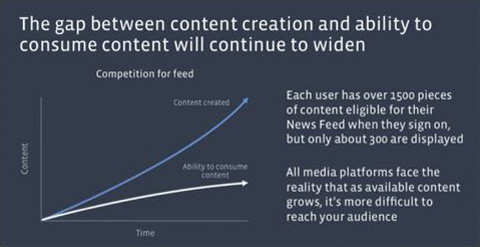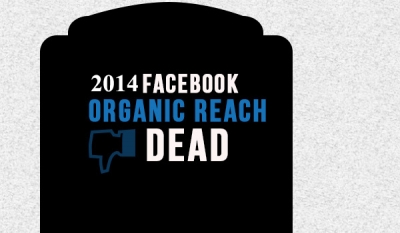Rewind back to December 2013 and you’ll find this batch of ‘bonus’ social media predictions, including ‘Facebook as a paid media channel’.
Quote: ‘When dealing with a mature social media strategy, the key part is often planning how paid, owned, and earned will work together to achieve the required objective. To do that, you need to understand the channels available to you and the buckets in which they fall.
This is not news. However what might be news, and let’s be absolutely clear about this, is Facebook is now purely a paid media channel only.
If you’re working under the misconception that you might one day see the headline ‘Facebook boosts organic reach for brand pages!’ then you’re in trouble. Facebook is a PAID channel, and should be treated as such.’
Later, in March 2014, Marshall Manson published his white paper ‘Facebook Zero: considering life after the demise of organic reach’.
Collating data from hundreds of pages across the world, spanning around 45 million fans between them, the paper highlighted the lemming-like nature of brand page organic reach. To wit: it had fallen off a cliff and was plummeting fast.
In April, The Drum kindly offered up a few solutions on how best to handle this seemingly worrying trend. ‘Organic reach is over, so what now?’ offered up three main courses of action for those facing up to Facebook Zero.
1. Treat it as media and invest media money
2. Embrace other platforms [that serve you better]
2. Become a publisher (publishers report very little fall in reach, in fact quite the opposite)
When the summer came, Facebook (with no sense of irony whatsoever) tried to tell us, and I’m really not kidding here, that Facebook was not killing organic reach to make more money.
When asked the question directly, Facebook made its point clearly:
Quote: “No. Our goal is always to provide the best experience for the people that use Facebook. We believe that delivering the best experiences for people also benefits the businesses that use Facebook. If people are more active and engaged with stories that appear in News Feed, they are also more likely to be active and engaged with content from businesses.”
So it’s not about the money.
Nope.
Not at all.
Absolutely not.
No way.
It’s about the firehose of content that brands and humans keep creating. Or as Clay Shirky might say, it’s the cognitive surplus!

Facebook posted. Everybody laughed.
October.
Adobe wanted in on the action and, with its Q3 Global Digital Advertising Report, found that ‘Facebook is becoming a 'pay-to-play' platform for brands. Changes to Facebook’s algorithm led to a 50 per cent decrease in organic post impressions, and a 5 per cent increase in paid impressions.’

Organic reach is down by half but paid reach is up? Stunned.
But this is good. More data. More backing. More clarity.
Then November rolled around and the final nail in the coffin: Facebook announces it will be reducing overly promotional page posts in the News Feed. In layman’s terms, Facebook is saying: ‘If you want to publish ads, buy ads.’
Three specific areas it outlines as no-nos are: pushing products or apps, calls for competition entries or promotions and the re-use of advertising content. Hands up if you’ve ever reposted an ad on your social channels.
OK, hands down everyone.
All jokes aside, 2015 is only weeks away. 2014 will be remembered as the year that Facebook said ‘no more’ to free brand advertising in the News Feed.
The writing has been on the wall, in bold and underlined, all year. If you’re not on board yet, now might be the time to do just that.






















